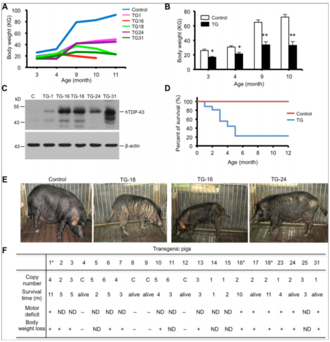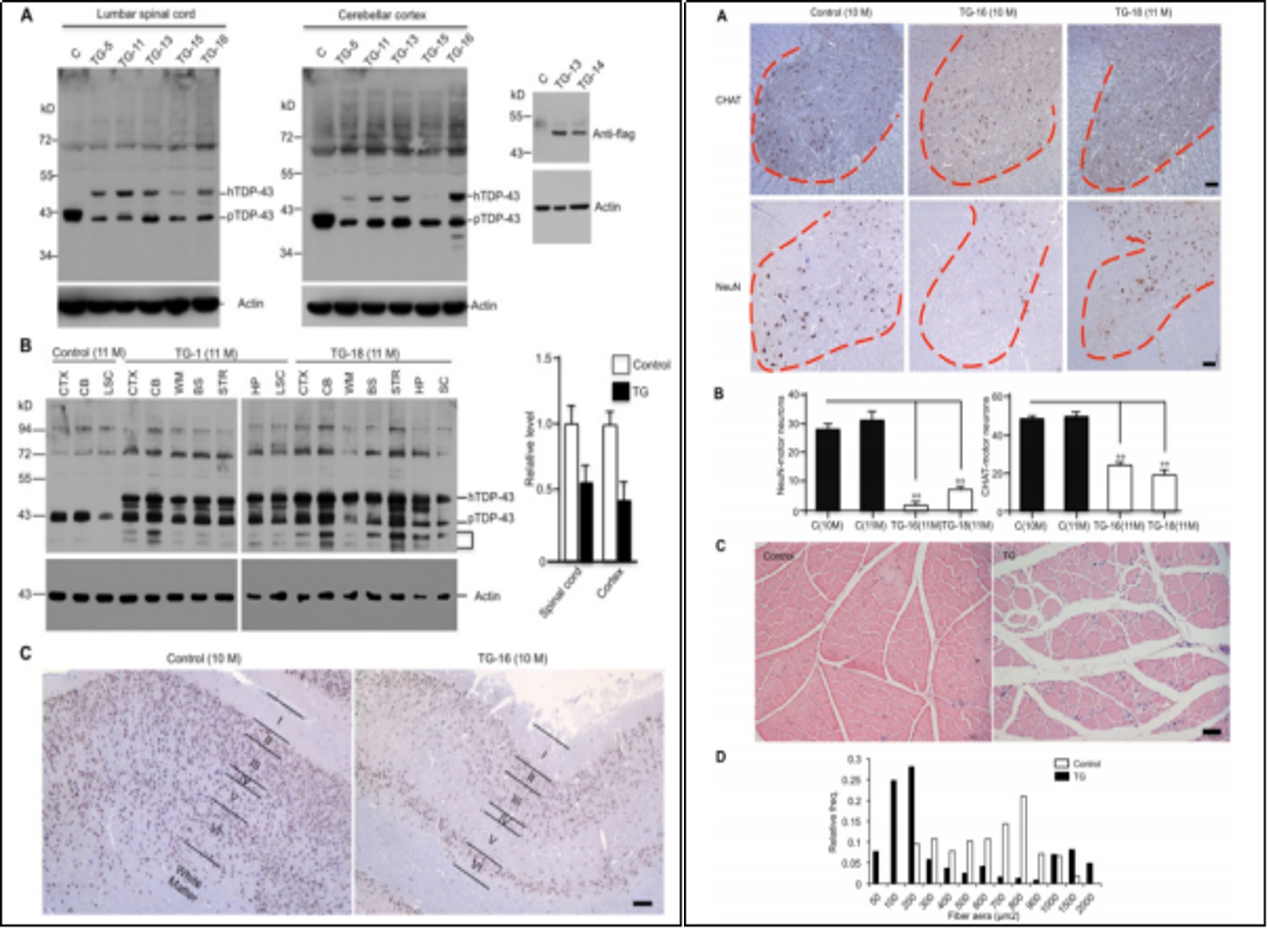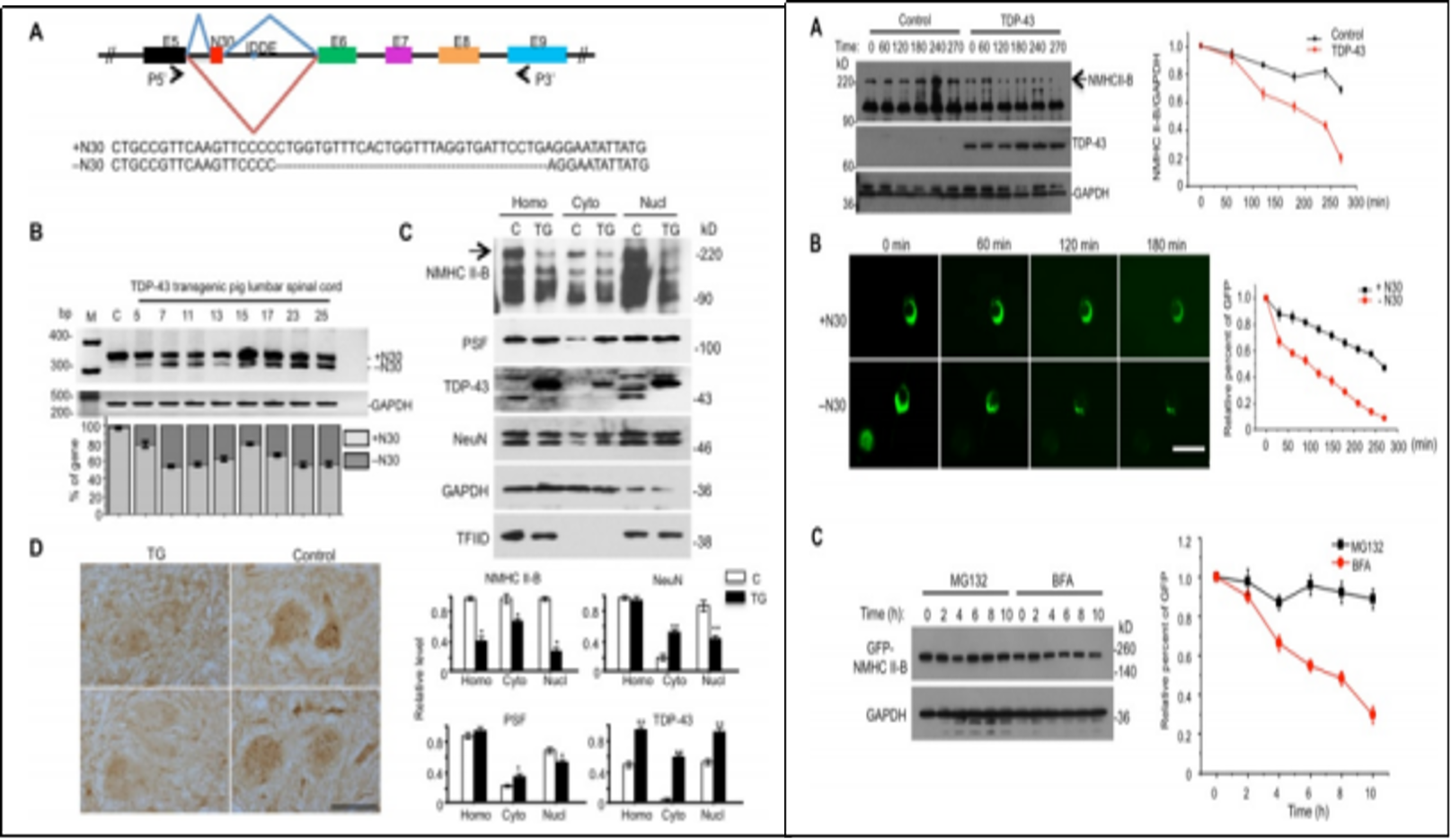Amyotrophic lateral sclerosis (ALS), commonly known as Lou Gehrig's disease, is a type of motor neuron disease. Motor neuron diseases are a group of chronic and progressive degenerative neurological disorders with unclear etiologies, selectively affecting spinal anterior horn cells, brainstem motor neurons, cortical pyramidal cells, and the corticospinal and corticobulbar tracts. Motor neuron diseases encompass four clinical types: ALS, progressive muscular atrophy, progressive bulbar palsy, and primary lateral sclerosis, with ALS being the most common among them.
The known causative genes for ALS include SOD1, TDP-43, and FUS. In both ALS and frontotemporal lobar degeneration (FTLD), the key pathological change involves the accumulation of pathogenic TDP-43 in the cytoplasm, leading to the formation of cytoplasmic inclusions.Due to the substantial similarities between pigs and humans, the use of transgenic pigs to study the pathological changes caused by mutant polyglutamine proteins has led to the identification of unique pathologies not observed in small animal models.
Pig Breed: Tibetan Pig








